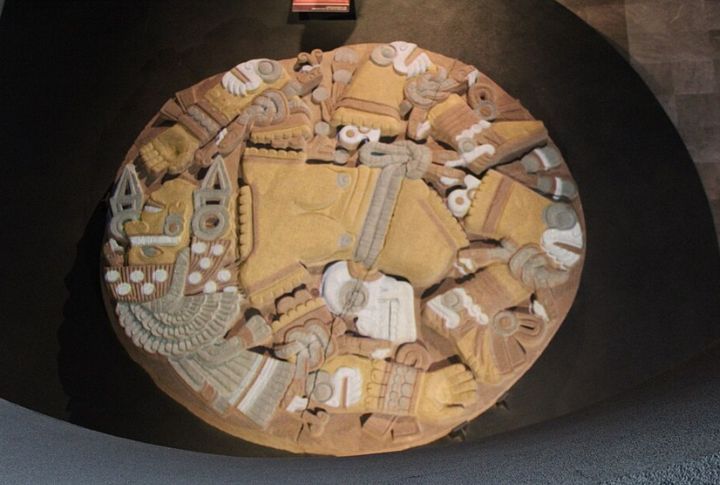
Even centuries after the Aztec empire’s fall, archaeologists still uncover important pieces of its history. These recent discoveries are helping to paint a clearer picture of their society. Ready to see what’s been found? Here are 10 incredible Aztec artifacts that highlight their achievements.
Double-Headed Serpent
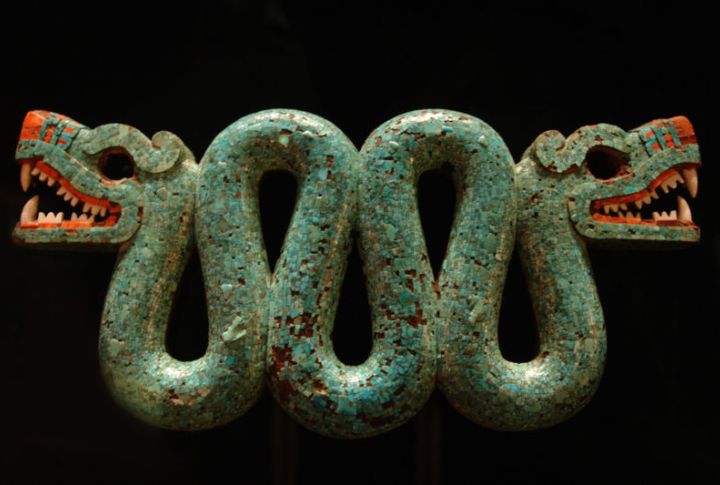
This sculpture features wood paired with shell and obsidian, designed to be worn by rulers or priests during religious and state ceremonies. Two snakes twist together in vibrant turquoise, symbolizing power and balance. Its sharp colors and intricate design make it one of the most recognizable Aztec artifacts.
Coyolxauhqui Stone
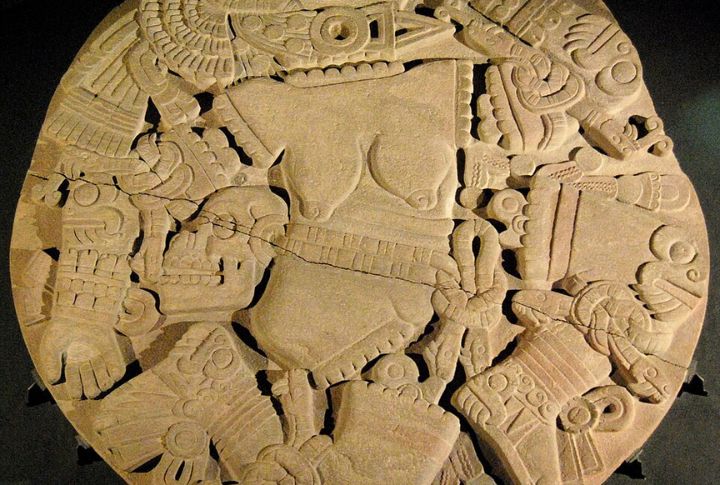
A striking stone carving depicts Coyolxauhqui, the moon goddess, after her dramatic defeat and fall from the sky. The detailed portrayal of her shattered body represents themes of sacrifice and cosmic struggle in Aztec mythology. Discovered in Mexico City, the sculpture sheds light on ceremonies honoring the cycles of life and mortality.
Mask Of Xiuhtecuhtli

A ritual object of deep religious meaning, the Mask of Xiuhtecuhtli signified the sacred link between rulers and the fire god. Turquoise, a stone associated with sky and fire, was arranged in precise patterns across the surface. Used in ceremonies related to renewal, it highlighted fire as both destroyer and giver of life, central to Aztec cosmology.
Aztec Calendar Stone
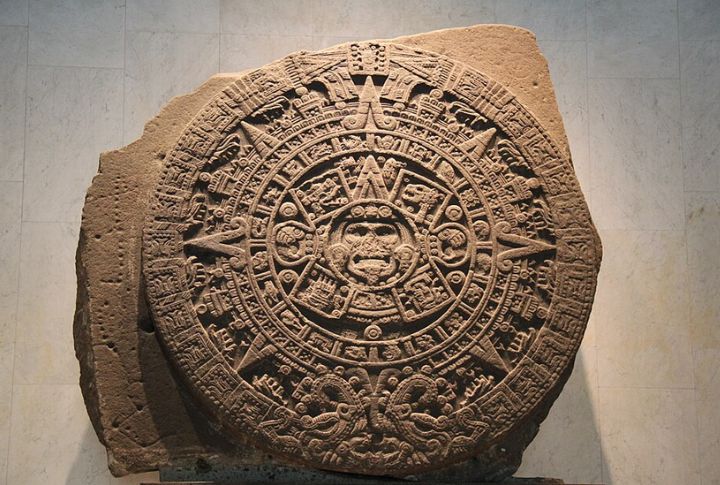
The Aztec Calendar Stone is a massive carved disc reflecting Aztec beliefs about time and gods. Tonatiuh, the sun god, sits at its center, surrounded by carvings of previous eras and events like the creation and destruction of past worlds. Once considered a calendar, experts now believe it played a key role in Aztec rituals.
Tlaloc Vase

Created to honor Tlaloc, known as the god of rain, this ceramic vessel features wide, piercing eyes and sharp fangs. The vivid blue glaze symbolizes the sky above, where life-giving rain is believed to come from. Used in rain-summoning ceremonies, the piece was more than a decoration—a powerful plea to the heavens for mercy and abundance.
Gold And Jade Jewelry
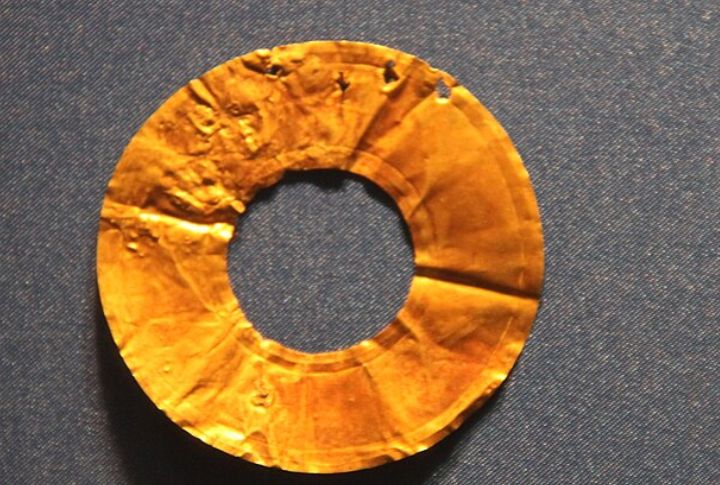
Gold and jade served as emblems of status and spiritual significance, far beyond simple decoration. Formed into earspools, pendants, and headdresses, these pieces held deep meaning for their wearers. Nobles and warriors adorned themselves with such jewelry to connect with divine power and the promise of eternal life.
Stone Of Motecuhzoma I
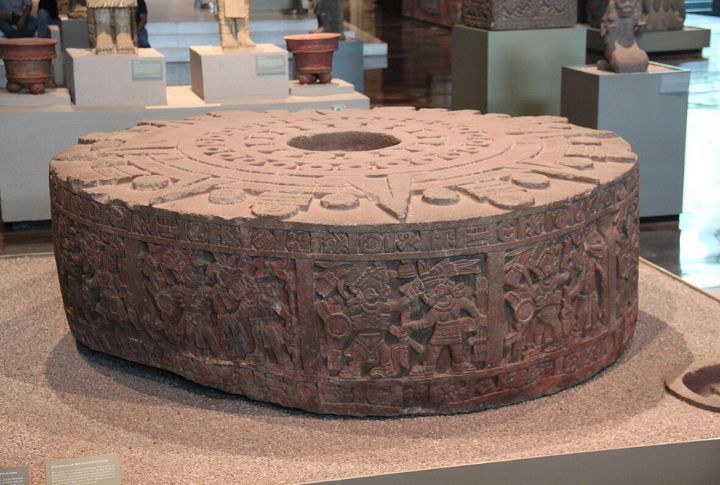
Crafted in basalt, the monument to Motecuhzoma I displays intricate carvings of war trophies, sacred insignia, and royal regalia. These elements collectively narrate his military success and divine sanction. Beyond commemoration, it functioned as a visual proclamation of his right to rule and his enduring place in history.
Fired-Clay Mictlantecuhtli Statue

This skeletal figure, made from fired clay, stands as a haunting tribute to Mictlantecuhtli—the Aztec god of mortality and the underworld. Its exaggerated bones and open jaw illustrate the belief that demise was a necessary passage. A hollow chest held offerings used in funerary rites to honor the departed and lead souls to the afterlife.
Serpent Labret With Articulated Tongue
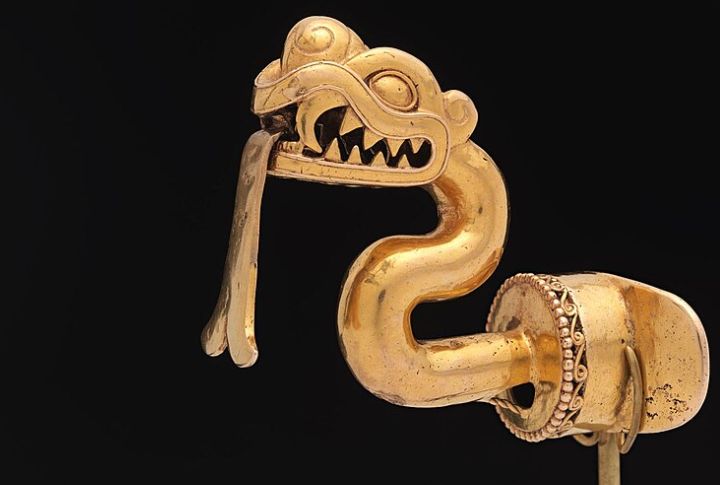
The serpent-shaped gold labret, complete with a moving tongue, was worn by Aztec nobles to represent intelligence and powerful speech. More than a display of rank, its detailed craftsmanship reflected the cultural value placed on expression and spiritual symbolism in personal ornamentation.
Coatlicue Statue
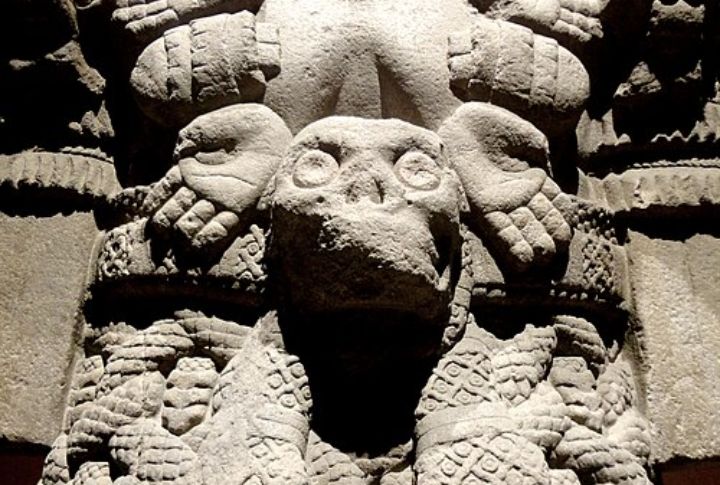
The imposing statue of Coatlicue, the mother goddess, commands attention with its mysterious and powerful presence. Snakes coil around her body, and a necklace of skulls hangs from her neck. This striking image represents both creation and destruction, designed to inspire awe and fear among the Aztecs.

